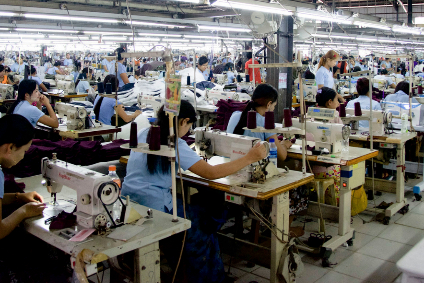
Asia remains the garment factory of the world: ILO
YarnsandFibers News Bureau 2022-06-28 14:51:23 – SwitzerlandAccording to a recent International Labour Organization (ILO) report, although Asia is the world's biggest apparel manufacturer, it confronts a number of problems.
The ILO report refers to Asia as the "world's clothing factory," but cautions that the sector confronts a slew of issues, many of which have been exacerbated by the Covid-19 outbreak. Rising labor costs, manufacturing and process automation, 'reshoring' and 'nearshoring,' as well as greater pressure to migrate to a more sustainable company model with better salaries and working conditions, are all challenges.
'Taking stock of recent changes in employment, earnings, and productivity in the Asian textile business' examines employment, salaries, and labor productivity in the Asian garment sector from 2010 to 2019, highlighting how the industry still accounts for 55% of global textile and apparel exports and employs 60 million people.
David Williams, manager of the ILO’s Decent Work in Garment Supply Chains Asia program, said that while wages and productivity have increased in many countries, the link between government policies and external pressures is not always clear and easy. With true support for social discourse and collective bargaining, as well as actual incentives from brands, the industry can establish a virtuous cycle in which greater salaries drive improved productivity and vice versa.
The paper illustrates the progress of the industry along various paths across the area. While economic diversification and upgrading have diminished its relevance in countries like China, Thailand, and the Philippines, it remains the primary economic engine in Cambodia and Bangladesh.
According to the research, Asia's proportion of global textiles and garment exports has increased dramatically since the early 2000s, peaking at 58% in 2015 before dropping to around 55% in 2019.
The report states that these trends were largely driven by China, which saw continuous export growth in both sub-sectors until 2015, when its declining share in wearing apparel exports was only partially offset by an increase in the share of other Asian clothing exporters, specifically Vietnam, Bangladesh, Myanmar, and Cambodia.
This might imply that nearshoring, rather than migration to lower-cost locations, occurred throughout these years. Despite recent declines, China's supremacy remains unrivaled, accounting for 34% of worldwide GTF exports in 2019, followed by Vietnam (5%), Bangladesh, and India (4.3 percent each).
According to the report, in recent years, the sector has depended primarily on reduced labor costs to obtain worldwide market advantages. Although most nations' real salaries in the industry have grown, working circumstances remain hard in general, including long and intensive working hours, poor occupational safety and health, and breaches of fundamental rights at work.
Gender wage disparities remain in the Asian clothing industry. Female employees are overrepresented among low-wage workers in the garment sector, and nations with the lowest proportions of female workers also have some of the largest gender pay discrepancies. Although women make up a considerable proportion of garment workers, gender wage inequalities exist, and are especially pronounced in countries where women face greater systemic labor market obstacles. In certain circumstances, women employees are victims of physical and sexual violence as a result of the gendered character of their employment.
While labor productivity in Asia's garment industry has increased in recent decades, it still remains poor in comparison to other manufacturing sectors. Few garment-producing nations have effectively progressed up the value chain in clothing production, with the majority of manufacturers still involved in low-skilled 'cut-make-trim' activities.
Data in the research show a positive relationship between labor productivity growth and wage growth in the sector, implying that investments in labor productivity may play an important role in helping to raise worker pay.
Market Intelligence
Ask for free sample Report

experience
Customer Base
dedicated team
Countries Served Worldwide









